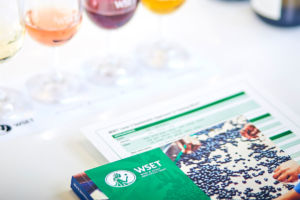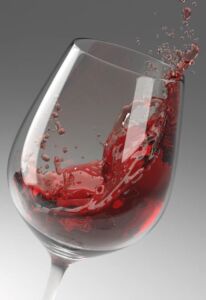As I type this, I am 14 days away from sitting for my WSET Level 3 Award in Wines exam. I know, I know – I bring that up with every post, but it’s important because there’s a level of urgency that’s both exciting and daunting.
Exciting because I’m very close to crossing the finish line in yet another level of my wine journey. Daunting because well, there’s A LOT of information to remember. During our last class, we traveled to five New World countries and explored their most beloved red wines. Italy, Australia, Greece, New Zealand and the United States are all known for different styles of red wines, and have varied climates and soils that contribute to their unique tastes. For instance, grapes planted in the hills and valleys of the Apennine Mountains, along with altitude, provide a moderating influence on the hot climate. That means, white grape varieties like Trebbiano, Verdicchio, Malvasia and Grechetto can all be the bright, high acid wines they are because of the mountains and nearby bodies of water provide the perfect ripening conditions for them to thrive.
But this post is about big reds, not whites – so let me get back on topic.
big reds, not whites – so let me get back on topic.
Australia is typically known for its big, bold Shiraz – but did you also know that Cabernet Sauvignon, Merlot and Pinot Noir also grow in a number of regions in the right quadrant of the country. In New Zealand, which is who we have to thank for the genius technology of screw caps, Cabernet Sauvignon and Merlot of the Bordeaux variety are popular in Hawke’s Bay, and Pinot Noir thrives in Marlborough. Interestingly, Central Otago, has a continental climate because it is right in the middle of a land mass. Yet even with its varied climates, New Zealand wines tend to be on the pricier side because shipping and labor costs, isolated location and limited land. It was a treat to learn about the red wine grapes of Greece – Xinomavro and Agiorgitiko – and their ability to age well. Finally, exploring red wines of AVAs in California, Washington, and Oregon was quite refreshing, and even though it gets little love in our book, New York’s Finger Lakes are still cranking out some delicious Riesling, Cabernet Sauvignon, Pinot Noir and Cabernet Franc.
After traveling across the globe from the comfort of my kitchen, Jill gave us a little pop quiz that challenged us to write a dry tasting note. Never had I ever written a dry tasting note before, but we had all we needed to complete the task – the grape variety, the vintage and the region it was from. Five minutes later, it was comforting to learn that I had done pretty well with my blind tasting note, and I will be implementing this technique in studies moving forward.